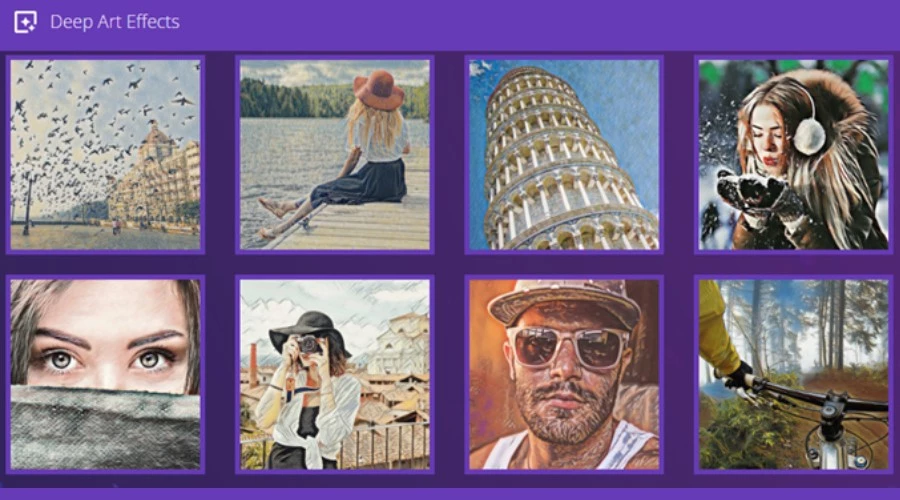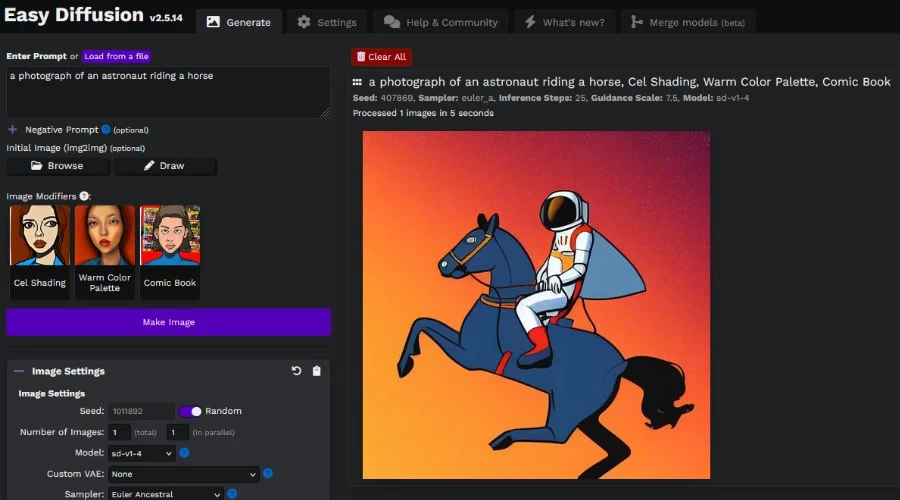There are many AI generators on the web that can create beautiful artwork. However, if you want a more hands-on experience, several desktop suites are also available.
These often come with additional editing tools and have the ability to generate more images than their cloud versions. PC software also gives you more control over your work.
After testing all the most popular desktop solutions, these top solutions will help you find the best AI art generator for Windows.
1. Adobe Firefly – trained with Adobe image library

Editorial giant Adobe has entered the AI space on Windows, kicking Windows out with Firefly.
The tool is trained on Adobe’s own vast image library, so the results look and feel very different from your average Web AI bot, which uses essentially the same algorithms and data.
At first glance, the text-to-image generator works like most other AI art generators. After you enter the descriptive prompt, four results will immediately appear on the screen. However, its toolbar provides endless opportunities to fine-tune your creations.
First, choose an overarching content type, such as photos, graphics, or in this case, art. Then you can choose from different styles, themes, effects, materials, and more.
These are added to the text field, similar to tags, and can be easily undone while experimenting with different options.
Unlike the typical web model, users do not have to learn complex prompts and are not limited by credits. You get full control to reproduce and edit your own work.
With Firefly, you can also apply AI to text effects, color changes, 3D model to image conversion, and image enhancement. Augment existing images with AI. There is also a fill option to remove or insert new objects in the image.
Firefly is currently available in beta as part of Adobe Express.
2. Luminar NEO – Create your own templates


Skylum’s Luminar NEO deserves an honorable mention. Although it’s aimed at photographers rather than traditional art styles, the use of AI is too impressive to ignore. It also helps bridge the gap between raw photography and photorealistic AI art.
Luminar uses a template system that allows you to adjust one image and apply the same settings to other shots. Awesome presets like Sky Enhancement and Background Atmosphere allow you to generate unique landscape art, even if your original image is bland.
Other AI options include background and noise removal, sharpening, and upscaling. The latter can take low-resolution images and improve their quality with incredibly accurate estimation.
Its powerful tools can also be applied to portraits, allowing you to easily change eye color, remove blemishes, and use professional styling to change almost every aspect of your photo. Many of these tools can be purchased from online marketplaces.
If you have Adobe Lightroom or Photoshop, you can use Luminar NEO as a plug-in, but the software also works on its own.
Lifetime access costs $149, but affordable subscription options are also available.
3. Deep Art Effects – Learn new styles


Deep Art Effects for Windows is not a full-fledged AI art generator, but it uses AI models to transform your existing photos into stunning artwork.
Simply import any photo with existing artwork. Then choose from over 100 different art styles and automatically transform it into something unique. This includes everything from watercolor and pencil drawings to abstract art and manga styles.
More than just a filter, the end result is often indistinguishable from the work of art created from scratch.
The user-friendly software includes a toolbar of parameters that allow you to fine-tune your results. For example, you can add intensity to your art style, make it closer to its original state, or reduce it. Or do you want to add more brightness or contrast?
As an AI model, it can learn new styles from imported images. For example, you can import Van Gogh’s famous work and apply its style to another, completely unrelated image.
This is especially useful if you have a unique style of artwork and want a quick idea of what the finished piece will look like from your imagination.
Other features include AI image upscaling, colorization, and even a video AI editor.
Deep Art Effects is available as a one-time purchase of $129, while subscription plans start at $9.90 per month.
4. Synthetik Studio Artist – Assisted Paint Mode


Synthetik’s Studio Artist is a powerful AI software that can generate regular art and animations.
This is done using 10 different tools, the first of which includes an automated assisted painting mode. Auto uses AI to transform your existing photos and images into paint-style art.
You can then modify these pieces with assistance or paint the images from scratch. Think of it like an expert stopping you from making a mistake.
You can also generate sketches, vector art, and mosaics, along with endless presets, styles, and effects.
The Generative Abstract Art Processor features hundreds of modules that can be combined to generate unique abstract procedural images and visual processing effects.
You can also automatically convert your art to NFTs, giving you control over your digital ownership.
Studio Artist is a great choice for those who are comfortable with editing software and want the benefits of AI alongside traditional tools. However, beginners or those who want to generate art with simple prompts may want to look for something a little simpler.
Studio Artist 5.5 is available for purchase for a one-time fee of $199, with discounted and free options available for educational institutions.
5. Stable diffusion/easy diffusion – full control over all parameters


Stable Diffusion is a popular deep learning text-to-image generator, perfect for art. There is no fixed interface and you can find it on the web and within some apps. It can also be installed locally on Windows without any restrictions.
This gives you more control over prompts and other parameters, and also allows you to generate far more images at once. The only catch is that you need a GPU with at least 4GB of dedicated memory.
To get started, you can download and install the GIT and Python prerequisites and the latest stable diffusion model.
Alternatively, you can use the Easy Diffusion interface, which is based on Stable Diffusion, to do all the heavy lifting for you.
It comes with two main input methods:
Text prompt. You can explain what you need and what you don’t need (negative prompts). For example, a forest landscape without “green trees”. Image to image. Upload an existing image and combine it with prompts to transform it into your own artwork.
In addition to the style-related prompts that are already filled in, you can select two preset styles. This will generate at least 10 images that you can save to your PC or send directly to popular cloud hosting sites.
For beginners, it can take some time to master all the settings, including the different models and sampling methods. You can also use sliders to have full control over things like size and resolution.
However, it is one of the most versatile AI art generators on the market and is completely free.
conclusion
Choosing the best AI art generator for Windows depends on your needs. If you want to generate complete artwork from just a text prompt, something like Adobe Firefly or Easy Diffusion are great options.
For a traditional image editing experience with AI integration, Studio Artist or Deep Art Effects are perfect.
If your art has ever ventured into photography or photorealism, Luminar NEO is the best AI photo editor on the market.



